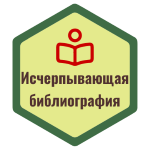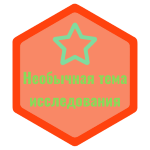This work aims to raise language learners’ awareness and enlarge their vocabulary bank by learning famous brand names in English. Brand names are the part of our daily life. Most of the famous brands are in English, thus the hypothesis of the work is that learning and understanding popular brand names in English could be one of the easiest ways to learn the vocabulary.
Keywords: vocabulary building, brand names, advertisement.
Introduction
English language learning is the requirement of the modern life. Language learning in general is a long-term process which require learning and practicing grammar, lexical range, sentence structure, pronunciation, etc. Most of language learners face difficulties with building the vocabulary. There are many ways of remembering new words, however still most students find it challenging to enlarge language word bank.
Since English language is becoming international most of famous trademarks name their products in English. Thus, we actually see many English words around us on a daily basis. In fact, being non-native speakers and living far from English speaking countries we can accidentally come across with English words while reading the names of the shops, scripts on the T-shirts, and mostly while reading product brands bought from the local supermarkets. Thus, on this project work we focus on the meaning and the origin of famous brands names.
Statement of the problem
Language learners frequently come across the names of famous brands in their everyday life. Most of English learning teenagers and even adults do not pay attention on the meaning of brands they purchase daily in the market. These may include the names of food brands like packaged snacks (“Lays”, “Snickers”) or household chemicals’ brands (“Fairy”, “Tide”). Although, understanding the meaning and the origin of product brands allows to expand the vocabulary and recall them when necessary.
Purpose of study
The purpose of this study is to explore frequently purchased brand names in English in order to enlarge the vocabulary. The product of the study will be a mini dictionary of brand names.
Research questions
Main question
Does understanding the meaning (or the origin) of frequently purchased brand names influence on enlarging the vocabulary?
Sub-questions
What are the most frequent product brands purchased by NIS students?
What is the meaning and origin of frequently purchased brands?
Are language learners aware of the meaning (or origin) of the brands they often buy?
Significance and benefits of the study and intended audiences
The study is significant for the most of the language learners of all ages as brand names are met by both males and females, adults and teenagers, and different level of language learners. Being aware of the definition and the origin of well-known brand names nowadays when the public places are filled with shortened acronyms and logos strengthens the possibility of understanding, remembering and applying new words. As a result, students will be able to learn English more effectively and educators will be able to refer to certain brand names while encountering them in a language learning process.
Literature review
In our study we will use the term called “frequently purchased brand names” which means that the focus of the research is not on the particular type of brands, like food brands or household brands but in those brand names which are popular among our school students.
First of all, it is important to define the notion of brand. “A brand is a name, sign, symbol, slogan or anything that is used to identify and distinguish a specific product, service, or business [1]. The history of brands is connected to the history of advertisements, which started in the seventeenth century. Though, “slogans and tradenames then became famous in the nineteenth century” [2]. The author also investigates the role of English advertisements in different countries and its influence on the nation’s cultural and social values.
According to Ismagilova [3], who researched the word building of popular brands, there are 8 types of brand name formation. They include:
- Initial abbreviation: HP (Bill Hewlett and Dave Packard), IKEA (Ingvar Kamprad).
- Shortening of words: “Fanta” that was formed from the word “fantasy”.
- Complex shortening: MICROcomputer SOFTware, Adolf Adi Dassler
- Compound words: toothpaste Aquafresh (aqua+fresh), soap Safeguard (safe + guard), shampoo Sunsilk (sun+silk).
- Numeralization: fizzy drink “7up”.
- Initialization: German mobile communications company T-mobile.
- Stylization (personification): Mr. Proper, Dr. Nail.
- Phonetic way: Kodak (the founder’s desire to have similar first and last letters), Rolex (the founder’s desire to have short, simple, easily pronounced word)
There are many types of brand names. They are descriptive, evocative, invented, lexical, acronymic, geographical and founder.
Babocká [4] in her research on the presence of English words in the Slovakian advertisements has found 271 anglicisms belonging to particular language proficiency levels (elementary, intermediate, etc.). She concluded that it could be used in English lessons mainly for teaching vocabulary. However, it is important to understand psychology of vocabulary learning and psychology of advertising.
In regards to the psychology of vocabulary learning some learners mention that even if they do not know the meaning of the word, they try to guess the meaning from the images, colours or the meaning of slogan in general. Language learning experts say that new words are effectively learnt when they are met incidentally by guessing the meaning of the unknown words from context [5]. Also these words stay in the memory for a long time and could be easily recalled in different situations in life [6].
Reading as one of the language skills play an important role in enlarging the vocabulary. As learners read not only novels, newspapers and magazines, but also they copy articles, sentences, idioms, “keep an eye on English advertisements and commercial brands and product specifications in everyday life“ [6] All these processes happen by reading the information incidentally.
Ellis states that if somebody wants to learn a word, he or she must at least recognize the word as a word and use it in his or her mental lexicon. Using the word in the mental lexicon means certain word should be recognized and produced by the speaker. In other words, the speaker should:
1) recognize the sound of the word in speech;
2) recognize of the orthographic mode of the word- its written form;
3) know correct spelling of the word;
4) know correct pronunciation of the word, both separately and in combination with other words;
5) recognize its syntactic, semantic, and lexical properties;
6) know the meaning of the word;
7) know its connotations and idiomaticity [7].
Therefore, producing new words learnt through meeting brand names incidentally requires not only understand the meaning of the word but also recognizing its linguistic peculiarities.
Methodology
Since the study was focused on the meaning and acquisition of popular brands, linguistic methods like content analysis and discourse analysis were applied to understand about the definitions and language learning processes [8].
“ Content analysis can be used to quantify the occurrence of certain words, phrases, subjects or concepts in a set of historical or contemporary texts” [9]. This type of method was used since it does not require social interaction and the Internet allows to have access to all the appropriate sources. The researcher mainly used Cambridge Advanced Dictionary as a reference to describe the meaning of most words included in the glossary.
In addition, discourse analysis was used to define some words, which had double meanings. “Discourse analysis is a research method for studying written and spoken language in relation to its social context. It aims to understand how language discourse used in real life situations” [10]. Since the topic is related to marketing and advertisement the choice of certain definitions depended on its use and appropriacy in social contexts.
Nazarbayev Intellectual School in Karaganda was selected as the research site for two reasons. Firstly, this research site is accessible because the researcher is a student of this school and can ask her peers to take part in the research. In addition, the school is explicitly open to research and innovation and willing to cooperate. Secondly, teenagers were chosen as the participants of the study as they are active English language learners who have an interest in enlarging English vocabulary.
According to D. Mertens [11], “the strategy for selecting your sample influences the quality of your data and the inferences that you can make from it”. Consequently, school students are close to understanding the brands and open to share their opinions. That is why purposeful sampling strategy was used, which allows a researcher to “intentionally select individuals who can best help to understand the central phenomenon” [12].
The third instrument of the study was a survey that contained 7 questions. 2 demographic questions and 5 main questions. The electronic link of the survey was sent to the participants who were asked to answer the questions. As the volume of the data was quite small, they were analyzed using pie charts and color coding in Microsoft Word basic text processing application.
Results
The survey was conducted in advance to learn the names of frequently purchased brands by NIS Karaganda students. In total we received 57 answers. Most of the respondents were grade 7 and 8 students of approximately both genders. Question 3 aimed to find out the names of popular brands students usually buy. Based on these answers the researcher made a list of words to search for in the dictionary. The glossary includes 50 most frequently bought brand names, their explanations and dictionary definitions with Russian translation.

1. What are the most frequent product brands purchased by NIS students?
Based on the survey results, I compiled a list of TOP-10 product brands, which are widely used by NIS students: Lay`s, Safeguard, Pepsi, Fairy, Snickers, Tide, Nestle, Vanish, Head & Shoulders, Orbit.
In addition, it should be mentioned that some responses included the names of popular clothing brands such as Gucci, De Facto, Adidas, Nike, etc.
2. Does understanding the meaning (or the origin) of frequently purchased brand names influence on enlarging the vocabulary?
According to the survey results, 5.3 % of the students disagree, 71.9 % agree with this statement and the 22.8 % of students don`t know about how names of product brands could help to enlarge the vocabulary.
3. Are language learners aware of the meaning (or origin) of the brands they often buy?
The survey results showed that the 24.6 % of the students understand the meaning of product brand names, 17.5 % do not understand and 57.9 % understand the meanings of some words. Students mostly guess the meaning of the word using the picture and colour. The colour of the brand is associated with certain spheres of life. For example, “green” was associated with environment and mostly cleaning chemicals, while “red” was the colour of emotions and energy. Additionally, the picture on the cover of the commercial product was also signaling on the possible meaning of the unknown word.
Conclusions and Recommendations
Since the purpose of this study was to explore frequently purchased brand names in English in order to enlarge the vocabulary, the main focus was on creating and organizing a glossary of brand names. The glossary could be used by NIS Karaganda students to learn the meaning and origin of brand names, teachers and educators who want to introduce vocabulary learning through teaching the semantics of brand names, English language learning adults might also find the glossary useful to remember the words as it contain the definition, the image and Russian translation.
Does understanding the meaning (or the origin) of frequently purchased brand names influence on enlarging the vocabulary?
In terms of main research question based on NIS Karaganda students’ answers we can generalize that understanding the meaning of brand names frequently met in daily life helps to enlarge the vocabulary.
What are the most frequent product brands purchased by NIS students? What is the meaning and origin of frequently purchased brands?
The glossary consisting of top 50 frequently bought brands defines the meaning and origin of the words that NIS Karaganda students come across on a daily basis.
Are language learners aware of the meaning (or origin) of the brands they often buy?
In general students know the meaning of certain products they buy, but only the basic vocabulary meaning. There is still a necessity in searching for the definition of some uncommon words.
Further study will involve a larger population of participants and focus on specific issues connected to the language acquisition process. At the current stage of research, the recommendation for all the parties involved is to focus more on keeping an eye to brand names in English and practice using new words in context.
References:
- Manocha, S. Study of Branding: Challenges, Positioning & Repositioning. (2014)
- Hashim, A. English in Advertising. ResearchGate. (2010, pp 520–522).
- Ismagilova, S. Word Building of International Brands Names. (2016).
- Babocká, M. (Visual advertisements: a tool for English language teaching? 2016).
- Shu Jing, Hui X. Incidental Vocabulary Learning of Non-English Major Graduates (2007).
- Ahmad, D. Vocabulary learning styles. (2017).
- Ellis, R. Second Language Acquisition, Oxford University Press, Oxford. (1997)
- Baxter, J. Discourse analytic approaches to text and talk in Research Methods in Linguistics. (2010).
- What is content analysis? https://www.scribbr.com/methodology/content-analysis/
- What is discourse analysis? https://www.scribbr.com/methodology/discourse-analysis/
- Mertens, D. Educational research methods. (2010, p.309).
- Creswell. W. Educational Research, 4th edition. (2011).
- https://www.ignytebrands.com/7-popular-types-of-brand-names/











